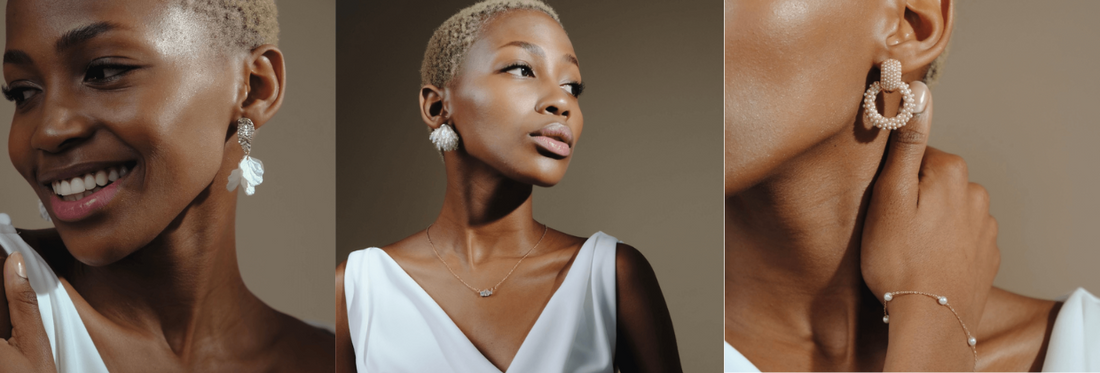Bridal jewellery holds significant importance in many cultures and societies around the world. Its significance goes beyond just being accessories; it often symbolizes tradition, love, commitment, and cultural values.

Due to the popularity of Autumnal weddings, at Betty and Biddy we thought we would discuss The Importance of Bridal Jewellery.
According to Moore & Co, 43% of 2022 weddings took place between September and November. October was the most popular month to get married in 2022, accounting for 20% of all weddings. Fall weddings have become even more popular over the last few years—a trend that will likely continue.
In many cultures and religions, specific types of jewellery are worn during weddings as part of traditional practices. These pieces may carry historical or cultural meaning that connects the couple to their heritage and ancestors. You can tie in your Irish culture with the Bridal Grá Go Deo Pearl Bracelet or
Ar an Lá Seo - Square Charm and Star
Bridal jewellery is designed to complement the bride's wedding attire, enhancing her beauty and adding a touch of elegance. The right jewellery can elevate the overall look, making the bride feel even more special on her big day.
The jewellery typically compliments the neckline of the bride's dress or the hairstyles. In our previous article, we talk about styling the perfect jewellery pieces for different necklines.
Jewellery can also be a form of personal expression for the bride. It allows her to showcase her style, personality, and taste, making her feel confident and unique on her wedding day.

Bridal jewellery is often featured prominently in wedding photography, capturing these cherished pieces for posterity. The jewellery becomes a lasting memory of the day and the emotions associated with it.

Just as a bride's gown, makeup, and hairstyle are chosen carefully to create a cohesive look, jewellery serves as the finishing touch that completes the ensemble.
It's important to note that the significance of bridal jewellery can vary widely depending on the cultural, religious, and personal context.
Sources:








